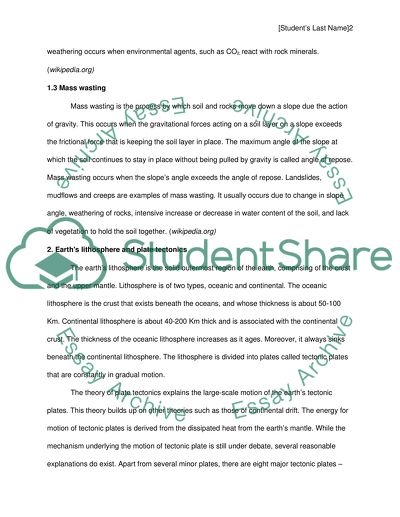Cite this document
(“Erosion, weathering, mass wasting. Earth's Interior Geologic Time Assignment”, n.d.)
Erosion, weathering, mass wasting. Earth's Interior Geologic Time Assignment. Retrieved from https://studentshare.org/physics/1436155-erosion-weathering-mass-wasting-earths-interior-geologic-time-scale
Erosion, weathering, mass wasting. Earth's Interior Geologic Time Assignment. Retrieved from https://studentshare.org/physics/1436155-erosion-weathering-mass-wasting-earths-interior-geologic-time-scale
(Erosion, Weathering, Mass Wasting. Earth'S Interior Geologic Time Assignment)
Erosion, Weathering, Mass Wasting. Earth'S Interior Geologic Time Assignment. https://studentshare.org/physics/1436155-erosion-weathering-mass-wasting-earths-interior-geologic-time-scale.
Erosion, Weathering, Mass Wasting. Earth'S Interior Geologic Time Assignment. https://studentshare.org/physics/1436155-erosion-weathering-mass-wasting-earths-interior-geologic-time-scale.
“Erosion, Weathering, Mass Wasting. Earth'S Interior Geologic Time Assignment”, n.d. https://studentshare.org/physics/1436155-erosion-weathering-mass-wasting-earths-interior-geologic-time-scale.


